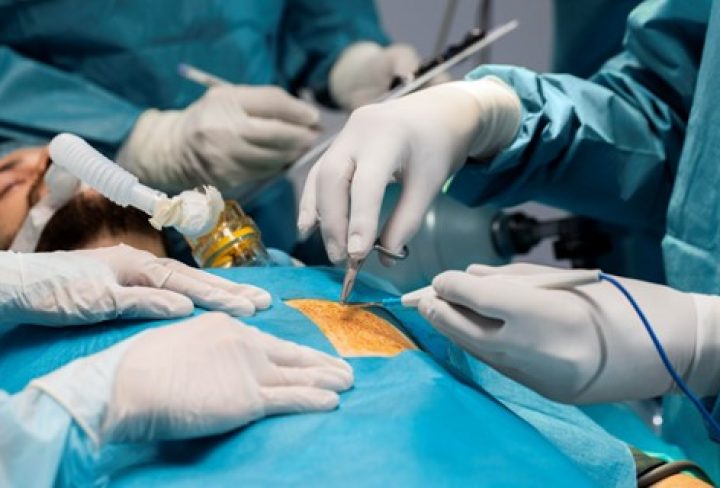A hernia is a lump that develops when the abdominal contents, loose fatty tissues, or organs push through the weak area of your lower abdominal wall (lower belly portion).
Hernias can develop in any weak or torn portion of the abdominal wall.
Laparoscopic hernia repair is a new surgical technique to fix tears in the abdominal wall. This procedure uses a tool called a laparoscope with a camera on the end to guide the surgeon.
What are the risks associated with laparoscopic hernia repair?
Certain risks associated with laparoscopic hernia repair include:
- Breathing or heart problems
- Nerve pain at the hernia site
- Fluid build-up at the site of surgery
- Swelling of the testicles
- Recurrence of the hernia
- Infections
- Damage to internal organs and blood vessels
How is the Laparoscopic Hernia Repair Performed?
- Laparoscopic hernia repair is done under general anesthesia using a thin, telescope-like instrument known as laparoscope
- The laparoscope is connected to a camera, allowing the surgeon to view the internal organs while operating
- A small incision is made near the navel, and the abdomen is inflated with carbon dioxide gas to allow your doctor to identify the hernia easily
- Instruments are inserted through the incision to repair the hernia
How can you prepare for the laparoscopic hernia repair?
- You may be asked to stop eating and drinking for at least eight hours before the procedure
- If you are on prescription drugs, ask your doctor whether you can continue taking the medications
- Stop smoking to reduce your risk of developing complications
- Maintain your weight, as being overweight increases the chances of complications
What are the Main Advantages of Laparoscopic Hernia Surgery?
- Tiny cuts rather than a large incision
- Reduced postoperative pain
- Fewer complications
- Short recovery time and early resumption of daily activities
- Low Risk of Infection
Post Operative Care for Laparoscopic Hernia Repair:
- You will be discharged the same day or the day after the surgery
- You will feel weak and tired for 1-2 weeks (or more) after going home. This will be resolved eventually
- Do not play sports or do strenuous exercise for three weeks
- Try not to lie flat. Elevate head and knees by placing pillows to decrease the risk of developing shoulder soreness
- Your belly will feel bloated for about one week; you may not be able to close your pants. This will pass as the gas in the abdomen is absorbed.
- You could develop mild bruising around one or more of your incisions
- You may have to avoid carbonated beverages for several days
Open Surgery Vs Laparoscopic Surgery
| Open Surgery | Laparoscopic Surgery |
| Large Incision | Small Incision |
| Longer Recovery Time | Short Recovery Time |
| Longer Hospital Stay | Short Hospital Stay |
| Large External Scar | Small External Scars |
| More Pain | Less Pain |
| More Post-op Complications | Less Post-op Complications |
Do’s and Don’ts Following Laparoscopic Hernia Repair:
Do’s:
- Do eat (start with liquids)
- Do stay hydrated
- Do continue medications
- Do wear comfortable clothes
- Do stay active
Don’ts:
- Do not lift heavy weights
- Do not consume alcohol
- Do not swim or bath (at least 2-3 weeks)


